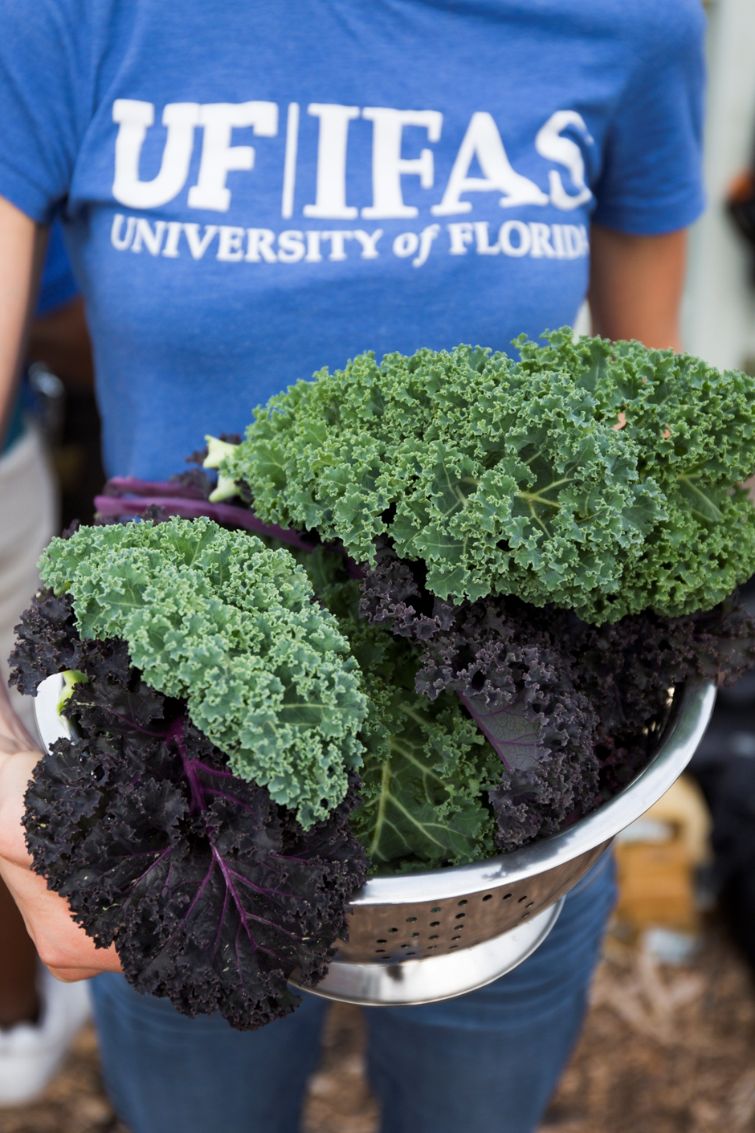Am I at risk for high blood pressure?
High blood pressure, or hypertension, can cause serious health problems. It makes your heart work harder and can damage your blood vessels even if you feel okay. Everyone should have their blood pressure checked regularly. If you have certain risk factors, you are more likely to have high blood pressure. If any of the following risk factors for high blood pressure apply to you, discuss them with your health care provider:
- There is a history of high blood pressure in my family.
- I am a man over the age of 40.
- I am a woman past menopause.
- I am African American.
- I am obese.
- I am physically inactive.
- I am diabetic.
- I consume too much alcohol.
- I eat an unhealthy diet.
- I use tobacco.

Credit: Getty Images
Can I decrease my risk?
You can decrease your risk of getting high blood pressure. Attaining these five goals can help you control your blood pressure and reduce your health risks:
- Aim for a healthy weight.
- Be physically active for at least 30 minutes each day.
- Choose and prepare foods with little salt.
- Eat at least five fruits and vegetables every day; more is better.
- If you drink alcoholic beverages, do so in moderation.
Working toward these goals will help keep you healthy. Your family will also benefit if they follow your lead and live a healthier lifestyle. Let's see how you can apply these rules to your life.
1. Aim for a healthy weight
As body weight increases, blood pressure tends to rise. If you are overweight, you can reduce your risk of high blood pressure by losing weight. Even losing 5-10 pounds can help prevent high blood pressure. If you are overweight and already have high blood pressure, losing weight can help lower your blood pressure.
There are charts you can use to see if you are within a healthy weight range for your height. The body mass index (BMI) is used as an estimate of body fat, which is the major health concern. To learn more about BMI and to use a BMI calculator, go to the Centers for Disease Control and Prevention website: https://www.cdc.gov/healthyweight/assessing/bmi/index.html.
Think of a healthy weight as one that you can maintain with a healthy lifestyle and that keeps you at a low risk for disease. Ask yourself the following questions to see if you are at a healthy body weight:
- Is my blood pressure normal?
- Is my blood cholesterol normal?
- Is my blood glucose (sugar) normal?
- Can I do moderate exercise comfortably?
- Can I maintain my weight without severe dieting?
- Do I eat a variety of healthful foods in moderation?
- Do I feel healthy?
If you answered "yes" to each question, then you are probably at a healthy weight for you. To maintain your health, follow the lifestyle recommendations in this fact sheet. If you answered "no" to one or more questions, then your weight may be putting you at risk for high blood pressure and other conditions. You may want to discuss your overall health with your doctor and ask for lifestyle suggestions.
2. Be physically active each day
A great way to start living a healthy lifestyle is to be more active. This section provides tips on how to include physical activity in your life. Being physically active will reduce your risk for high blood pressure and help keep you healthy. Here are a few of the benefits of being an active person:
- Attain or maintain normal blood pressure
- Attain or maintain normal blood cholesterol
- Decrease risk of heart attack, stroke, diabetes, and some types of cancer
- Help attain or maintain a healthy body weight
- Increase energy level
- Enhance sense of well-being
How much should I exercise?
Aim for at least 30 minutes of moderate physical activity most days of the week. Moderate physical activity increases your heart rate, but still allows you to talk while you are exercising. Examples are fast walking, weeding the garden, bicycling, and playing tennis. Most people will gain greater health benefits with longer or more vigorous activity. To get major health benefits, exercise moderately at least 150 minutes a week or vigorously 75 minutes a week. Keep in mind that you do not have to do all of your exercise at one time! You will get health benefits if you are active two or three times a day for a total of 30 or more minutes. Here is one example of how to do this:
- Walk the dog briskly (15 minutes).
- Walk during coffee break (15 minutes).
- Perform stretches and lift light weights while watching or listening to the news (15–40 minutes).
Activities like swimming, brisk walking, running, bicycling, dancing, and jumping rope are "aerobic" exercises, which means they require oxygen. These types of activities condition your heart and lungs, protecting you against heart disease. Many people find it helpful to keep track of their activity using an activity log (see Table 1 for an example).
Table 1. Sample Activity Log.
Light activities, if done daily, can also help keep you fit and lower your risk for high blood pressure. To increase your daily activity, start doing some of these:
- Use stairs instead of elevators.
- Get off the bus one or two stops early and walk the rest of the way.
- When shopping, park at the back of the parking lot.
- Ride a bike to the store, to work, or for fun.
- Work in the yard or garden.
- Move to your favorite music as you clean the house.
- Play actively with your children or grandchildren.

Credit: Getty Images
Do I need to see my doctor first?
Most people do not need to see a doctor before they start exercising. A gradual, sensible exercise program has few health risks. Do check with your doctor first if any of the following apply:
- You plan to start a vigorous activity plan and have a chronic health problem, such as heart disease, high blood pressure, diabetes, osteoporosis, or obesity.
- You are at high risk for heart disease (have a personal or family history, smoke cigarettes, have a sedentary lifestyle, or have abnormal blood lipids).
- You feel dizzy or faint when you are physically active.
- You get breathless after a mild workout.
3. Choose and prepare foods with little salt
Americans eat more salt (sodium chloride) than they need. They also have higher rates of high blood pressure than people in other countries. Often, when people with high blood pressure cut back on salt, their blood pressure falls. Eating less salt can also prevent blood pressure from rising in the first place. African Americans and older adults are often more affected by salt in the diet than others. However, there is no way to tell who will get high blood pressure when they eat too much salt. It is recommended that everyone keep their intake of salt moderate.
How much salt or sodium is recommended?
All adults should consume one teaspoon or less of salt a day. This is about 2,300 milligrams (mg) of sodium, which is much less than what most Americans consume. Persons with high blood pressure and others at high risk for high blood pressure should aim for no more than 1,500 mg of sodium per day. Although many older adults are at high risk for high blood pressure, trying to consume less than 1,500 mg of sodium on a daily basis may be a challenge, and 2,300 mg/day may be a more realistic goal.
Much of the salt we get in our diets comes from processed, packaged and restaurant foods. Doing more home cooking using low-salt ingredients can help you control the amount of salt in your diet. Additional suggestions are provided in Table 2.
Table 2. Ways to decrease your salt intake.
4. Eat at least five fruits and vegetables every day
Eating lots of fruits and vegetables each day can help keep your blood pressure low. It can also help lower high blood pressure. Select a variety of fresh fruits and vegetables that are in season and locally grown when possible. This will give you the most nutrients and will also keep costs lower. Canned (without salt or added sugars) and frozen choices are good options as well.

Credit: Getty Images
How many fruits and vegetables do I need to eat?
Eat at least 1½ cups of fruit and 2 cups of vegetables each day. More is better to decrease risk of high blood pressure. Recommended intake from each food group depends on your calorie needs. To find the calorie level right for you and the appropriate amount of food to eat from each food group, visit http://www.ChooseMyPlate.gov.
How can fruits and vegetables help keep my blood pressure low?
Fruits and vegetables are naturally low in sodium and contain nutrients like potassium, magnesium, fiber and calcium that can help lower blood pressure. They are also naturally low in fat, and can help with managing your weight.
Here are some tips for adding fruits and vegetables to your daily diet:
- Add fresh berries or sliced banana to your cereal in the morning.
- Snack on dried fruit, such as apricots, raisins, or dried plums (prunes). Try the flavored kind for a treat.
- Keep washed and cut-up carrot and celery sticks in the refrigerator at work and home for a quick and healthy snack.
- Order a salad instead of French fries if you have fast food.
- Have boxes of 100% fruit juice handy for a healthy drink break.
- Keep fresh fruit available in the refrigerator (except bananas, which should be kept at room temperature) for a quick and healthy snack.
- Add extra fresh or frozen vegetables when you make "from scratch" or prepackaged soups, stews, and other mixed dishes.

Credit: UF/IFAS photo by Tyler Jones
5. If you drink alcoholic beverages, do so sensibly and in moderation
Drinking too much alcohol can lead to high blood pressure. Men should have no more than two drinks a day and women should have no more than one drink a day. This may be too much for older adults; check with your doctor.
- Each of these counts as one drink:
- 1½ ounces of 80-proof distilled spirits
- 5 ounces of wine
- 12 ounces of beer (regular or light)
Isn't drinking alcohol good for my heart?
Moderate drinking of red wine may lower the risk of heart disease for some people, but other practices can also reduce this risk. These include eating a healthy diet, being physically active, not smoking, and maintaining a healthy weight. People who are unable to drink moderately should not drink at all.
What are other ways to reduce risk of high blood pressure?
Other practices that help prevent high blood pressure include the following:
Getting Your Minerals from Foods
The minerals potassium, magnesium, and calcium may play a role in keeping blood pressure down. Include food sources of these minerals every day.
For potassium, eat:
- a variety of fruits and vegetables
- fish, lean pork, and veal
- dry peas and beans (legumes)
- fat-free or low-fat (1%) dairy
For magnesium, eat:
- nuts and seeds
- green leafy vegetables
- dry peas and beans
For calcium, eat:
- low-fat milk, yogurt, and cheese
- green leafy vegetables
- calcium-fortified foods, including orange juice, tofu, breads, and cereals
People with low calcium intakes tend to have high blood pressure. Get the recommended amount of calcium every day from the foods you eat. If your calcium needs are high, a calcium supplement can help you meet your goal, but it may not affect your risk for high blood pressure. See Table 3 for your daily recommended amount of calcium.
Table 3. Recommended calcium intake.

Credit: UF/IFAS photo by Camila Guillen
Practicing Stress Management
Stress can cause your blood pressure to rise. Over time, high levels of stress may contribute to high blood pressure. Stress management techniques include relaxation and meditation. They may not prevent high blood pressure, but they feel good and may help you stick to an exercise or weight management program that can help you manage your blood pressure. For more information about how to manage stress in positive ways, download EDIS document FY517, Stress Management: Ways to Cope, at https://edis.ifas.ufl.edu/fy517.
Follow these recommendations to help reduce your risk for high blood pressure. The healthy lifestyle practices discussed here will also lower your risk for heart disease and stroke.
Want to know more?
Check out these resources for more information on high blood pressure, weight management, or physical activity as well as healthy recipes and eating tips for healthy living.
National Heart, Lung, and Blood Institute Information Center
The NHLBI website provides information on heart, vascular, lung, and blood diseases, consumer publications, and recipes. http://www.nhlbi.nih.gov
U.S. Department of Health and Human Services MyHealthfinder
This site contains information about hundreds of health topics (many in both English and Spanish), interactive health tools, healthy living, and health services, such as locating a doctor or other health providers. http://www.healthfinder.gov
National Stroke Association
This site has information about stroke prevention, symptoms, and recovery. http://www.stroke.org/understand-stroke
Fruits and Veggies: More Matters®
This site includes information on meal planning, shopping, recipes, cooking, and getting kids involved as well as resources to help increase fruit and vegetable intake. Fruits & Veggies – More Matters! | HealthySD.gov
Physical Activity Guidelines for Americans
This site provides the current physical activity guidelines from the U.S. Department of Health and Human Services. The first-ever physical activity guidelines were published in 2008, and the second edition was released in 2018. Current Guidelines | health.gov
Call your local UF/IFAS Extension Family and Consumer Sciences (FCS) agent to see what healthy lifestyles educational programs are offered in your county. Your county Extension office should be listed in your telephone book under County Government. In Florida, you can find the location and contact information for the UF/IFAS Extension office in your county at https://sfyl.ifas.ufl.edu/find-your-local-office/.